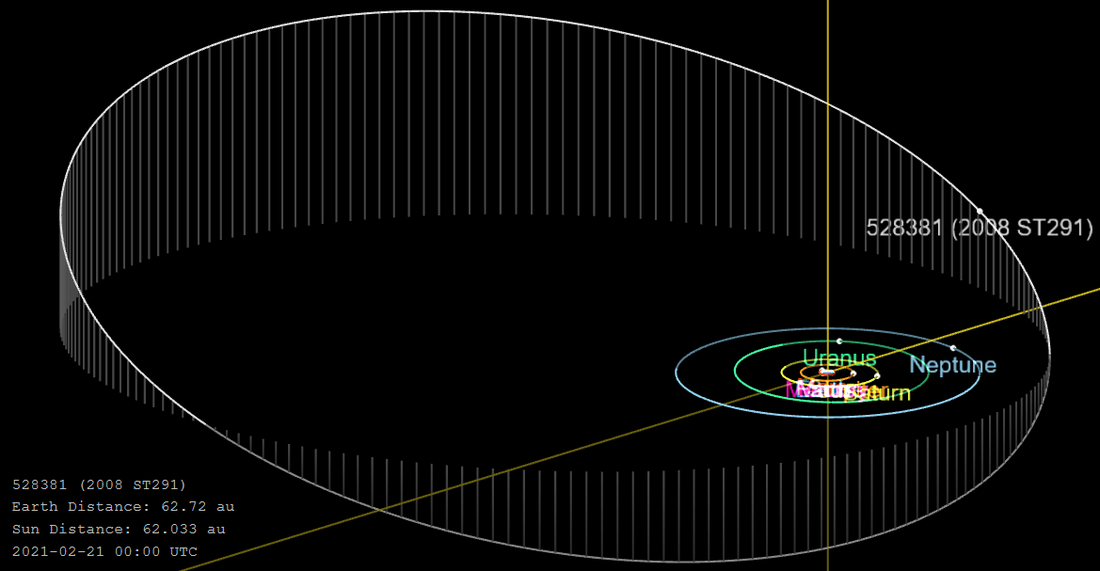Top Qs
Timeline
Chat
Perspective
(528381) 2008 ST291
Trans-Neptunian object From Wikipedia, the free encyclopedia
Remove ads
(528381) 2008 ST291, provisional designation 2008 ST291, is a 1:6 resonant trans-Neptunian object located in the outermost region of the Solar System that takes almost a thousand years to complete an orbit around the Sun.[5] It was discovered on 24 September 2008 by American astronomers Megan Schwamb, Michael Brown and David Rabinowitz at the Palomar Observatory in California, with no known earlier precovery images.[1]
Remove ads
Numbering and naming
This minor planet was numbered by the Minor Planet Center on 18 May 2019 (M.P.C. 114657).[8] As of 2019, it has not been named.[1]
Orbit and classification

2008 ST291 is located at the 1:6 Neptune resonance of 99 AU meaning that it completes roughly 1 orbit for every 6 orbits Neptune makes.[3] It orbits the Sun at a distance of 42.3–157.5 AU once every 998 years and 4 months (semi-major axis of 99.89 AU). Its orbit has an eccentricity of 0.58 and an inclination of 21° with respect to the ecliptic.[4] Currently located at 60.9 AU from the Sun,[6] the object came to perihelion in 1954.[4]
Remove ads
Physical characteristics
Based on an absolute magnitude of 4.4,[1] 2008 ST291 is estimated by the Johnston's Archive to be about 584 kilometres (363 mi) in diameter, assuming a typical albedo of 0.09 for trans-Neptunian objects.[3] Astronomer Mike Brown estimates a slightly smaller 549 km from the same albedo and a fainter 4.6 magnitude.[5] The Asteroid Dynamic Site records a brighter 4.3 magnitude, which calculates to 612 km using the same albedo (and same formula as Johnston's); using the average of these magnitudes and a standard assumed minor planet albedo range of 0.25 ~ 0.05, possible sizes of 345 to 773 km are produced.
See also
Notes
References
External links
Wikiwand - on
Seamless Wikipedia browsing. On steroids.
Remove ads

